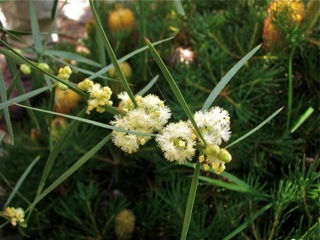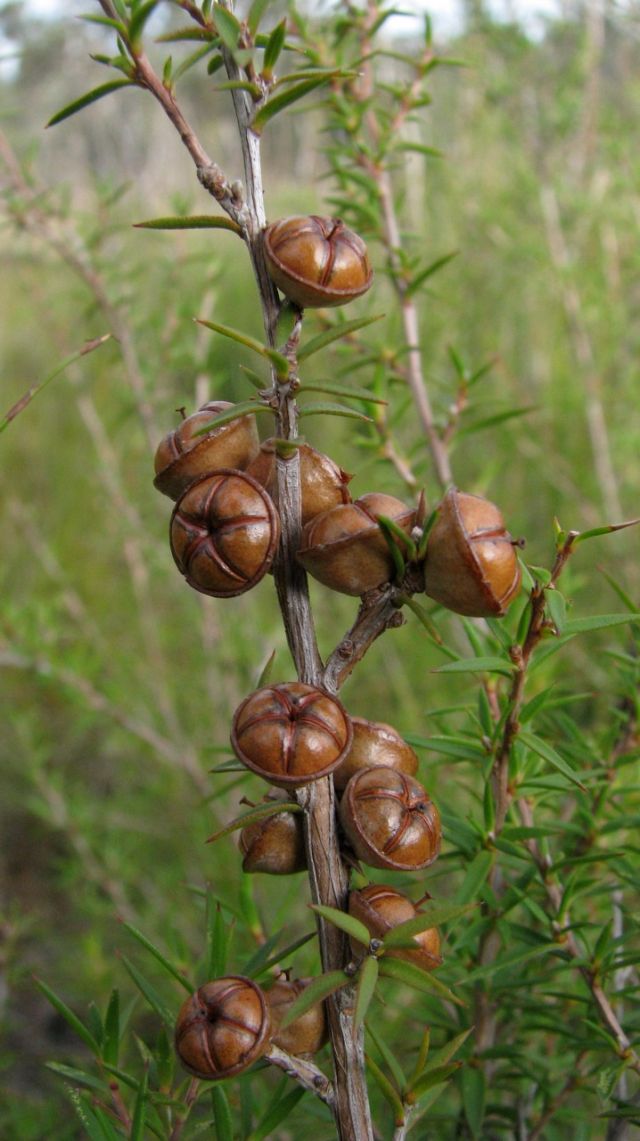Sheoaks are really worth a close look at this time of year.
I have just realised that the needle-like ‘leaves’ are not leaves, though they look superficially like sharp pine tree leaves, and also make a similarly appealing sighing sound in the wind. The sheoak leaves are reduced to a ring of tiny tooth-like leaves that grow in the nodes which occur regularly along branchlets. In coastal areas Drooping Sheoak Allocasuarin. verticillata has long drooping branchlets up to 40 cm.

Drooping Sheoak (male)

Drooping Sheoak (female)
Further inland Black Sheoak A. littoralis has shorter, 20cm branchlets which may ascend or droop. They are dioecious, which means the reproductive organs are on separate plants. Both these species are coming into flower, the female plants with small rose-coloured globular heads close to the branches, which will be followed by hard, gnarled cones. It is the male plant, however, which I really love.

Black Sheoak (male)
The long, orange, drooping, catkin-like inflorescences at the end of the branchlets give the trees a delightful warm glow to enjoy when walking along our coastal paths or inland trails in the brisk winter weather.
In the heathy woodlands have a look out for Sweet Wattle Acacia sauveolens.

Sweet Wattle
This is the first of the wattles in our district to come into flower and it stands out due to its long, narrow, bluish-green, widely-spaced foliage. Currently, clustered fluffy globular and fragrant cream flowers are just starting to emerge from buds at the base of the phyllodes.
You may like to check out Prickly Teatree Leptospermum continentale, as the newly developed five-chambered leathery capsules are clustered along the stems waiting for an appropriate moment, such as fire, to release their numerous seeds.

Prickly Teatree
Along our wetlands, if you look carefully, you may notice the little-known Lesser Joyweed Alternanthera denticulata.

Lesser Joyweed
This scrambling plant has widely-spaced, paired, soft, narrow leaves. The flowers are papery tufts of silvery-white growing at the bases of the leaves.
A much more obvious plant in the wettest areas is Narrow leaf Cumbungi Typha domingensis. These are shedding their seed from the long brown capsules in lovely, fluffy, cotton- wool-like clusters which are quite a sight in windy weather.

Narrow leaf Cumbungi
If you look closely you may see what I missed…the male flowers are just above the female flowers on the same stem!

Narrow leaf Cumbungi flowers
Red Ironbarks Eucalyptus tricarpa are for me a highlight of the winter with their dark, deeply ridged trunks, and their floral carpet of pretty cream and sometimes pink blossom. They are however opportunist, and trees near each other may flower at different times. Honeyeaters descend on flowering trees, and are wonderful to watch as they call and chase each other through the branches.
Around the towns you may have noticed Ironbarks, some with bright pink flowers carpeting the ground. These are a more northern species called E. sideroxylon which has flowers of more variable colouring, including a very rich pink.

E. sideroxylon – bright pink form
The two Ironbarks were both originally thought to be sub-species, but are now treated as distinct species due to their distribution and number of buds (tricarpa 3, and sideroxylon 7).

E. sideroxylon – pale pink form
Remember to carry Flowers of Anglesea and Aireys Inlet on your winter walks.
Ellinor Campbell